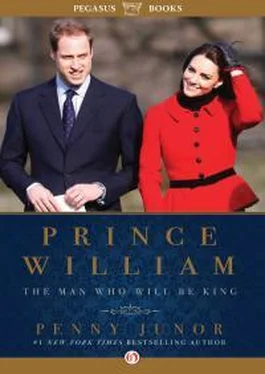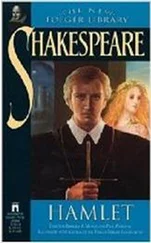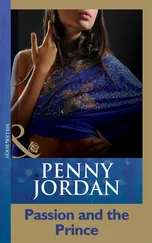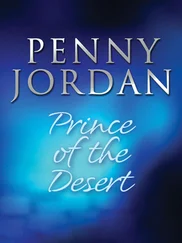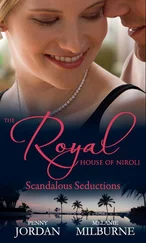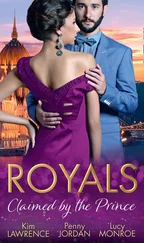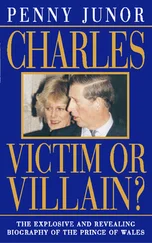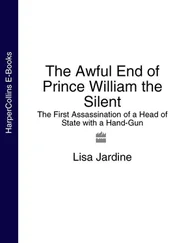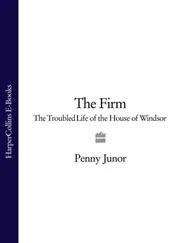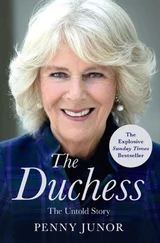It was ever thus. The public face was so very different from the one that Charles had to support and cajole and encourage in private. She needed constant reassurance, constant attention, constant love; but the mood swings were violent and unnerving. She went from cheerful and funny to brooding and sobbing, or furiously angry and screaming, in the blinking of an eye. Many were the times she cut herself until she bled profusely; and there were other instances of self-harm. She said herself that she had once hurled herself at a glass display cabinet and another time thrown herself down a flight of stairs. These were classic symptoms of the bigger problem, but thirty years ago self-harm was little understood and almost never spoken about.
Charles had no idea how to cope; he did everything she asked: he got rid of loyal staff whom she said she didn’t like, gave away the faithful dog she couldn’t stand, and stopped seeing the friends she neither liked nor trusted. Nothing he did seemed to make Diana happy, and, not knowing what more to try, as often as not he simply walked away, which only exacerbated her feelings of isolation and abandonment.
And while the birth of William initially brought fantastic elation, it didn’t last.
William’s arrival in the world could not have come at a better moment. Britain was in triumphant mood; the Falklands War, which had brought people together in a way not seen since the Second World War, was over. An end to hostilities was formally declared the day before his birth.
Victory restored national pride, and brought huge relief, not least for the Royal Family, on a personal as well as professional level. Prince Andrew’s life had been on the line along with all the other servicemen and women. He was a Royal Navy helicopter pilot with the aircraft carrier Invincible and, like everyone with a son or brother in the war, they had lived in fear of bad news. His scalp would have been a fantastic propaganda coup for the Argentinians. The Cabinet had wanted him to be moved to a desk job for the duration of the war, but Andrew had insisted on being allowed to do the job he was trained for and the Queen and Duke of Edinburgh supported him.
So when the Task Force had set sail from Portsmouth on 5 April, leaving emotional scenes on the quayside, Prince Andrew had been amongst them. The Prince of Wales became preoccupied by what was happening on the other side of the world; partly as heir to the throne, partly because he was Colonel-in-Chief of two of the regiments, and not least of all because he worried about his younger brother. Yet Diana was so deeply turned in on herself by then that she couldn’t share his anxiety and seemed to positively resent his focus being on the Falklands instead of her.
Before the war, few people in Britain had even heard of the Falkland Islands. They were eight thousand miles away in the South Atlantic, barren, windswept, and largely populated by sheep; but they had been British for 150 years, and when Argentina, which had long disputed their ownership, took them by force in April 1982, Margaret Thatcher, then Prime Minister, took the country to war to reclaim them. It was the first time that modern communications and television had brought the shocking reality of war into people’s living rooms.
Throughout the remains of the summer the ships made their way home to Portsmouth, each one returning to a hero’s welcome; and photographs and snippets of news about the new royal baby did nothing but enhance the country’s temporary sense of wellbeing.
A week after the birth, the baby’s names were announced. He was to be William Arthur Philip Louis – with William never to be abbreviated, according to Buckingham Palace, to Will, Willie or Bill. See how long that lasted. The choice of William was, as his father explained, ‘Because it is not a name that now exists in the immediate family.’ The last Prince William, Charles’s cousin, Prince William of Gloucester, a keen pilot, had been killed ten years earlier in a plane crash. He was just thirty.
His namesake was christened on 4 August, the Queen Mother’s eighty-second birthday, in the Music Room at Buckingham Palace, dressed in the lace christening gown that had first been worn by Victoria’s second child, the future Edward VII. Dr Robert Runcie, then Archbishop of Canterbury, conducted the service using the Lily Font – and water from the River Jordan in the Holy Land, which was a custom dating back to the Crusades. The ceremony began at noon, followed by a champagne lunch in the State Dining Room for the family and sixty guests, including George Pinker and the nurses who had attended William’s birth. The cake, again in keeping with tradition, was the top layer from Charles and Diana’s wedding.
The choice of godparents showed a strong bias towards Charles’s side of the family. Only one, Natalia, the twenty-three-year-old Duchess of Westminster, was Diana’s choice and age – they had been childhood friends. The others were Lady Susan Hussey, one of the Queen’s ladies-in-waiting, who had known Charles since he was a child; Sir Laurens van der Post, the seventy-five-year-old South African explorer and writer; and three relatives – Constantine, former King of the Hellenes, Lord Romsey, who was Lord Mountbatten’s grandson, and Princess Alexandra, the Queen’s cousin and one of the most popular members of the Royal Family, to whom Charles was especially close.
Despite being swaddled in oceans of antique lace for his baptism, and having such a distinguished roll call of grandparents, godparents, friends and relations, William’s early years were remarkably normal and informal. For all its history and grandeur, Kensington Palace was a comfortable family home. George III had converted it into apartments for the Royal Family and grace and favour apartments for the Royal Household.
Diana’s elder sister, Jane, had married Robert Fellowes, who was then Assistant Private Secretary to the Queen, so they were neighbours. Their first child, Laura, was a year old when Charles and Diana moved in. Princess Margaret was another neighbour, and initially a staunch supporter of Diana. Prince and Princess Michael of Kent, whose children were slightly older than William, had an apartment in the palace, as did the Duke and Duchess of Gloucester with their three children.
Numbers 8 and 9 were entirely refurbished and redecorated before Charles and Diana moved in, and although a uniformed butler would open the door to visitors, inside it was like any smart, privately owned townhouse. It was not large by royal standards; it had three reception rooms (one housing a grand piano), a dining room, three bedrooms, including a master suite, and on the top floor a nursery suite plus rooms for the staff. The décor was the work of Dudley Poplak, a South African designer Diana’s mother had recommended and who had known Diana since she was a child. He ensured that the furnishings were elegant but cosy, a comfortable mixture of antique and modern, with pretty fabrics and wallpapers. The hall and stairway were carpeted in fresh lime green and pink with a Prince of Wales feather design running through it.
After the first few weeks, Anne Wallace, whose speciality was newborn babies, was replaced by Barbara Barnes. Aged forty-two, she had spent the previous fifteen years working for Princess Margaret’s friends, the Hon. Colin and Lady Anne Tennant. She was not a formally trained nanny, didn’t wear a uniform, liked the children she looked after to call her by her first name and had a good sense of humour. Her style was exactly what Diana wanted and reinforced the sense of normality that she insisted would be the hallmark of William’s childhood. She didn’t want him to be seen and not heard, or banished to the nursery, and she certainly didn’t want anyone thinking they might take her place as his mother.
Читать дальше
